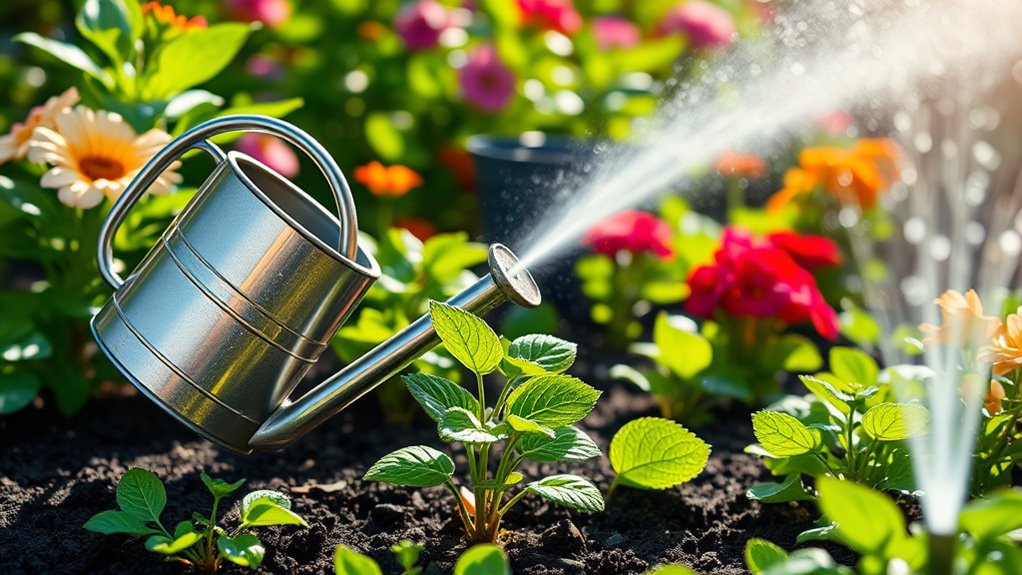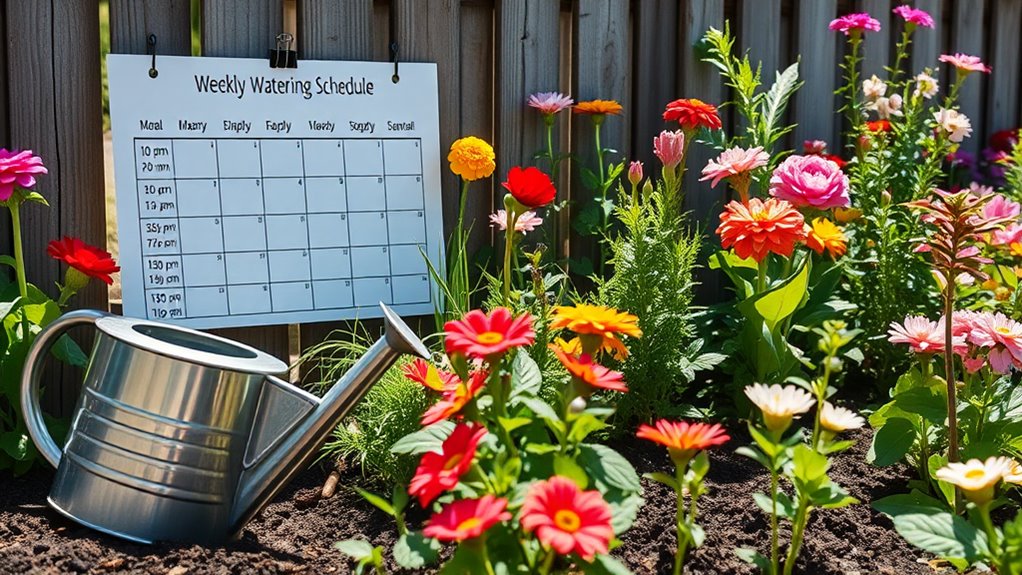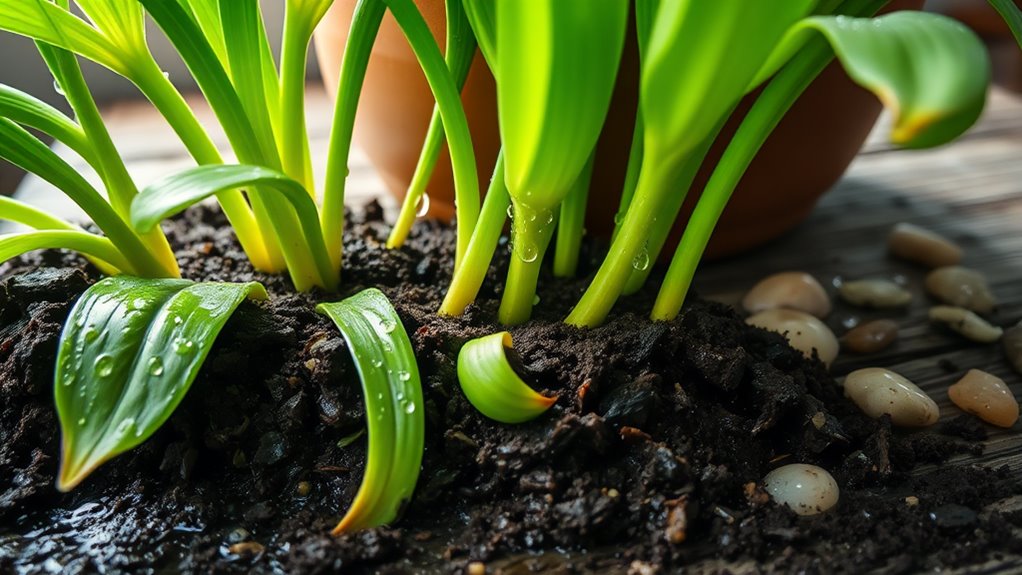You’re Probably Watering Your Garden All Wrong – Here’s the Fix
You’re likely watering your garden incorrectly, leading to stressed plants. First, assess your soil type and moisture levels—clay retains water, while sandy soil drains quickly. Water early in the morning to reduce evaporation and maintain consistency. Aim for about 1 inch per week, adjusting for signs of wilting or yellowing leaves. Incorporate deep watering techniques and mulch to enhance efficiency. By making these adjustments, you’ll achieve healthier plants. Discover more tips for ideal gardening practices.
Understanding Your Soil’s Needs
How can you guarantee your garden thrives? Start by understanding your soil’s needs.
Many gardeners make watering mistakes, assuming all soil types require the same amount of moisture. Clay soil retains water, while sandy soil drains quickly.
To avoid over or under-watering, test your soil’s moisture with your finger or a moisture meter. Adjust your watering schedule based on this information.
Incorporate organic matter to improve soil structure, enhancing its ability to retain moisture. Additionally, consider conducting a soil test to identify specific nutrient deficiencies that may affect plant health.
Regularly check for signs of stress in your plants, and remember: a well-informed approach to soil needs leads to healthier, more productive gardens.
Timing: When to Water for Maximum Benefits
When’s the best time to water your garden for ideal growth?
Early morning is your golden hour.
Temperatures are cooler, reducing evaporation, and plants can absorb moisture throughout the day.
If mornings aren’t possible, aim for late afternoon, giving foliage time to dry before nightfall, which helps prevent diseases.
Avoid midday watering; the sun’s intensity can lead to significant water loss.
Observation is key—watch for signs of wilting in plants to adjust your schedule.
Consistency matters, so try to water at the same times daily to establish a routine.
This way, your garden can thrive and flourish efficiently. Additionally, understanding effective watering timing can further enhance your garden’s health and productivity.
The Right Amount of Water: Finding the Balance
Determining the right amount of water for your garden can be a balancing act. Too little water stresses plants, while too much can lead to root rot.
A general rule is to provide about an inch of water per week, either from rainfall or your watering efforts. To gauge this, use a rain gauge or a simple container to measure your output.
Observe your plants; wilting indicates thirst, while yellowing leaves suggest overwatering. Soil moisture tests, like the finger test, can help you assess whether it’s time to water. Mastering the art of watering is essential for ensuring your plants receive the proper hydration they need.
Striking this balance guarantees your garden thrives without unnecessary risks.
Techniques for Effective Watering
Mastering effective watering techniques is essential for maintaining a healthy garden.
To guarantee your plants thrive, consider these methods:
- Deep Watering: Water less frequently but soak the soil thoroughly to encourage deep root growth. This method allows soil moisture to reach the roots for optimal growth, making it a key practice in deep watering techniques.
- Early Morning Watering: Water your garden in the morning to minimize evaporation and fungal diseases.
- Use Mulch: Apply a layer of mulch to retain moisture and regulate soil temperature.
Monitoring Plant Health and Adjusting Watering Practices
How can you tell if your plants are getting the right amount of water?
Start by observing their leaves; yellowing or wilting indicates stress, while vibrant, firm leaves suggest adequate hydration.
Check the soil moisture by sticking your finger about an inch deep; if it feels dry, it’s time to water.
Monitor growth patterns too; stunted growth might signal underwatering, while root rot can result from overwatering.
Additionally, being aware of common overwatering mistakes can help you prevent potential issues before they impact your plants.
Adjust your watering schedule based on seasonal changes and specific plant needs.
Regularly assess both foliage and soil health to fine-tune your practices and assure your garden thrives.





